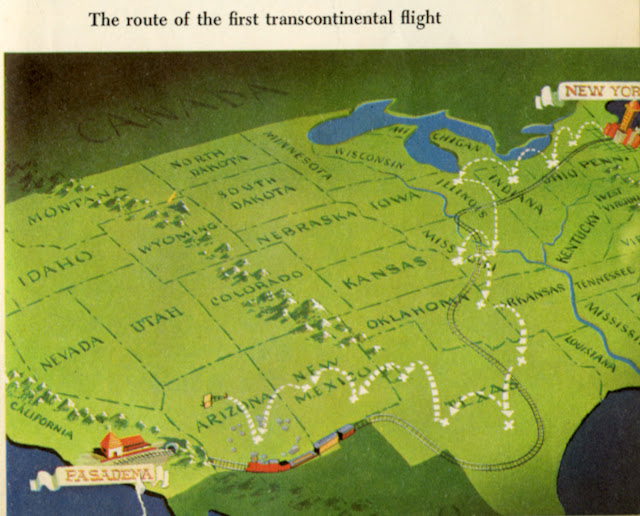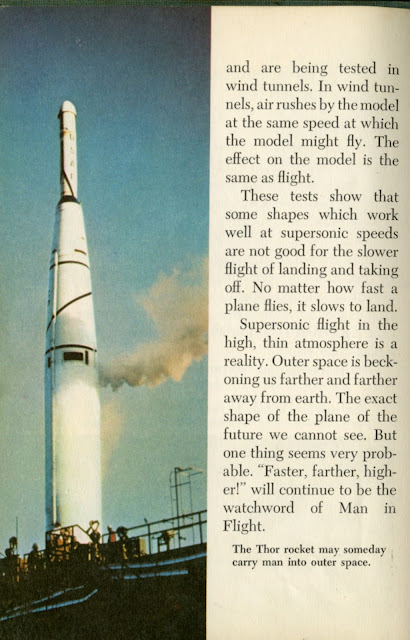This is a Disney book that was part of the "Tomorrowland Adventure" series that Disney published for schools making WWD episodes into textbooks for the classroom. It is found both as this pamphlet cover and a "perma-bound" school version (below).
"Man in Flight" television show; aired on March 6, 1957. Directed by Hamilton S. Luske. The history of flight, told in a humorous animated sequence using parts of Victory Through Air Power with new narration. Walt Disney also takes viewers to Disneyland by helicopter and shows them some of the flying attractions there.
Primarily about the history of flight this has no space art in it except 1 painting of the XR-1 at the back in the "supersonic flight" section. "Tomorrowland Adventure" series.
Along with images from "Victory through Air Power" it has some very nice illustrations that may have been done just for this book to "round" out the other coverage of spaceflight and satellites.
These last three images are the only ones I might called space related.





























































